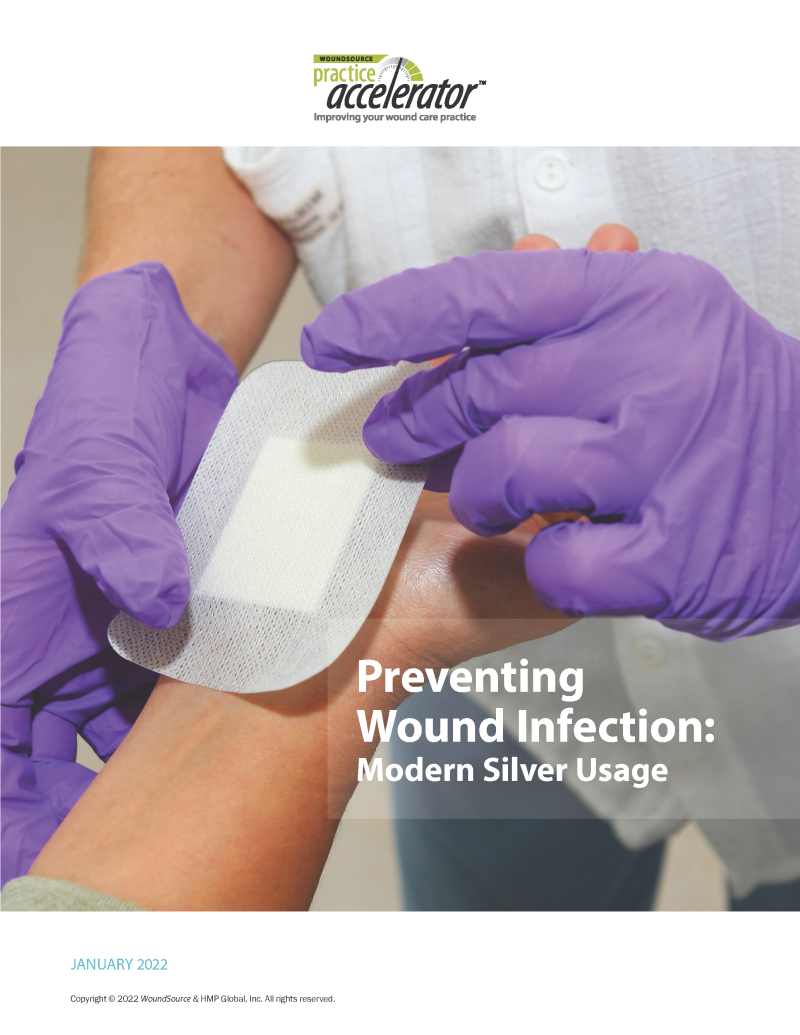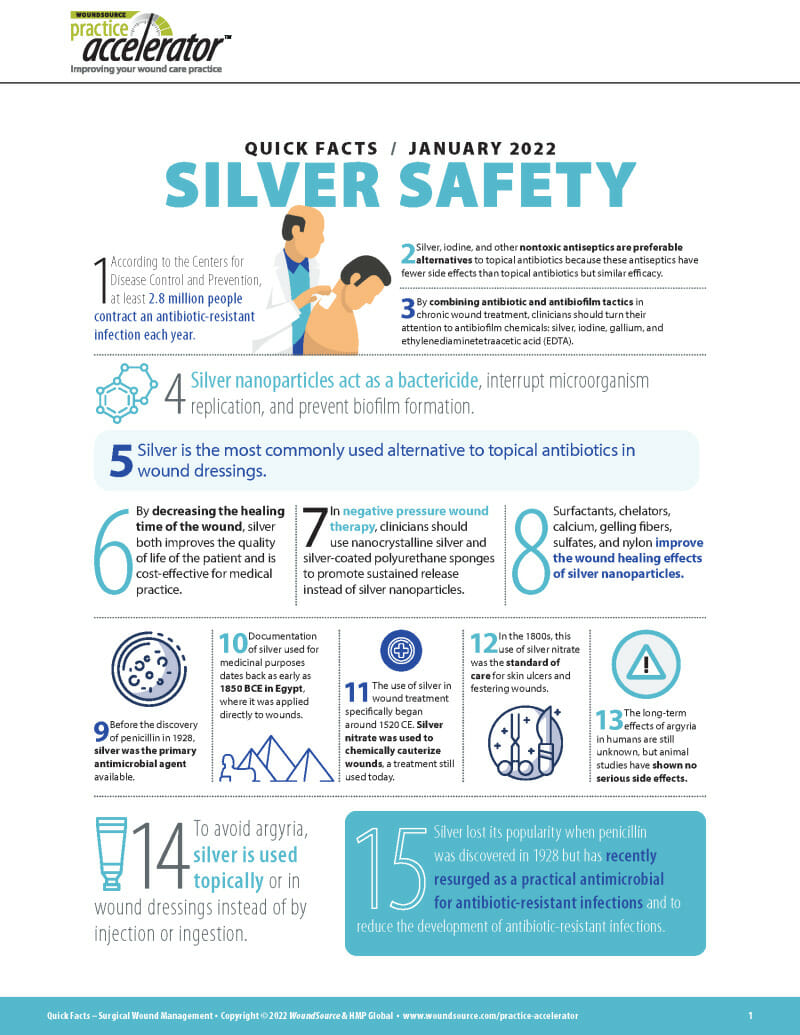
Silver Safety
JANUARY IS SILVER SAFETY MONTH For this month's WoundSource Practice Accelerator series, we are providing education on a variety of topics related to the use of silver products in wound care. Scroll below to read this month's white paper and articles, to print out our quick fact sheet, and to sign up for this month's webinar.
Upcoming Webinar
Silver in Wound Care: Clinical Outcomes
Thursday, January 27Maria Goddard, MD, CWS, FAPWCA
Since as early as ancient (1850 BCE) Egypt, silver has been used in wound care owing to its antimicrobial properties. Although its popularity dwindled in 1928 with the discovery of penicillin, medicinal silver has recaptured wound care professionals' attention with the rise of antimicrobial-resistant microbes. In modern dressings, the incorporation of silver nanoparticles decreases the risk of infection while allowing the dressing to continue the facilitation of a moist wound bed environment. In nanoparticle form, silver deconstructs the cell membrane of microbes, passes into their cell body, and causes internal damage. There are various theories on how the silver nanoparticles precisely render the microbe inactive, but all agree that there is some level of intracellular damage. By decreasing the healing time of the wound, silver both improves the quality of life of the patient and is cost-effective for medical practice. With the addition of elements such as surfactants, chelators, gelling fibers, sulfates, nylon, and calcium pectinate, silver's antimicrobial properties are enhanced with moisture-balancing properties. The use of silver in wound care has a long history of efficacy, with few side effects. Health care professionals should consider silver nanoparticle dressings to decrease healing times and improve the quality of life of their patients. Registrants attending this session will learn:
- The history of silver usage
- The problem of antimicrobial resistance
- Indications and contraindications for the use of medicinal silver
- Variations of medical silver in dressings and their clinical outcomes
White Paper
Preventing Wound Infection: Modern Silver Usage
Alternatives to antibiotics are increasingly used in wound care to stem the rise of antibiotic-resistant bacteria. Silver, a common alternative to topical antibiotics, has a long history of use with little evidence of harmful side effects. This white paper first discusses the historical background of medical silver and the global problem of antimicrobial resistance. The guide then compares numerous alternatives to topical antibiotics and describes in detail the silver formulations currently u...Fact Sheet
Quick Facts - Silver Safety
To combat the rise of antimicrobial resistance, health care professionals around the globe are on a search for ways to minimize reliance on antibiotics. Silver and other nontoxic antiseptics are optimal for antimicrobial stewardship since they display fewer side effects than topical antibiotics with similar efficacy Silver, which has a long history in wound care, is increasingly used to prevent or treat antibiotic-resistant infections and to disrupt biofilm formation. Medical silver is most comm...Featured Articles
Cytotoxicity in Wound Care: Is Silver Safe?
The incorporation of silver into wound dressings has been a breakthrough to combat the effects of antibiotic resistance, despite silver safety concerns. Regardless of its recent popularity, silver is not a new tool in health care. ...
Read MoreBreaking Down Silver: How Bacteria Are Affected
As a cost-effective alternative to topical antibiotics, silver is now widely available in wound dressings. However, what does silver really do within the wound bed? Silver uses a multifaceted approach to combating infection that attacks bacteria internally. ...
Read MoreSilver for Wound Infection Management and Prevention
Silver has become one of the most commonly used alternatives to topical antibiotics in recent years because of the growing concern over antibiotic resistance. Silver offers a multifaceted antimicrobial approach that makes it less likely for resistance to develop. With its limited and uncommon cytoto...
Read MoreThe History of Silver in Wound Care
Before the discovery of penicillin in 1928, silver was the primary antimicrobial agent available. Now, as antibiotic resistance plagues the health care field, silver has new value for wound care. Additionally, silver has demonstrated limited cytotoxicity when used topically, thus making it a suitabl...
Read More









